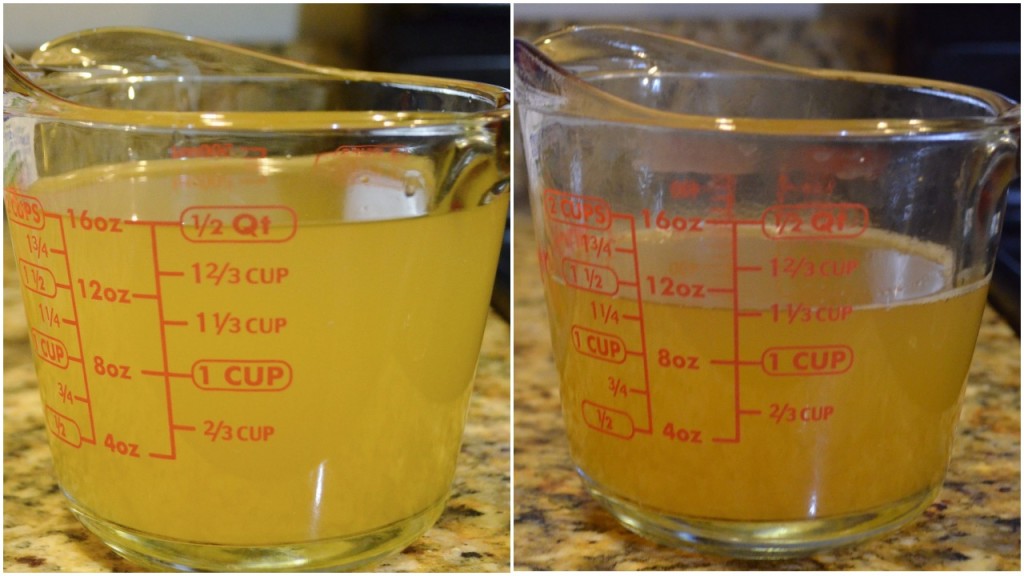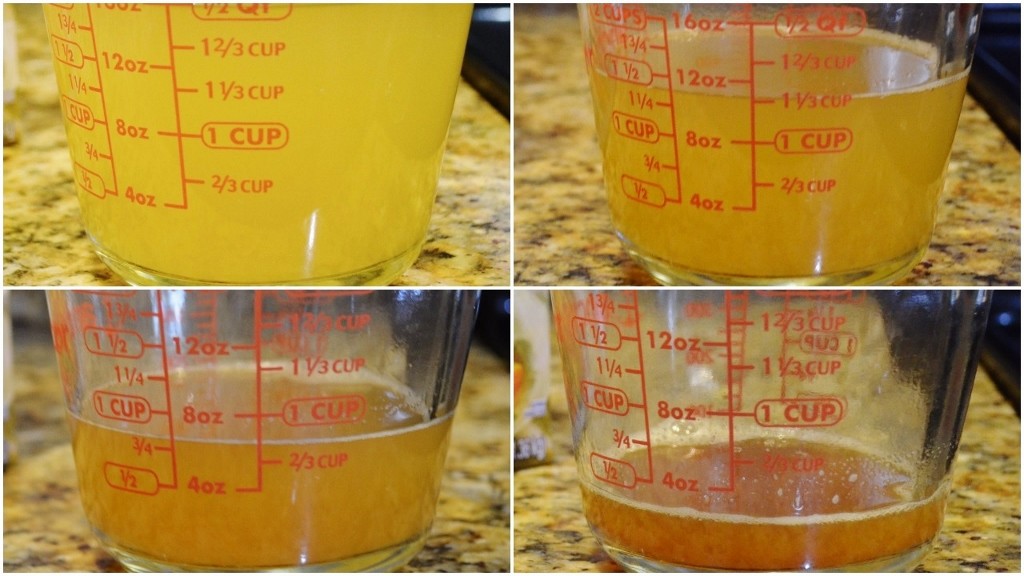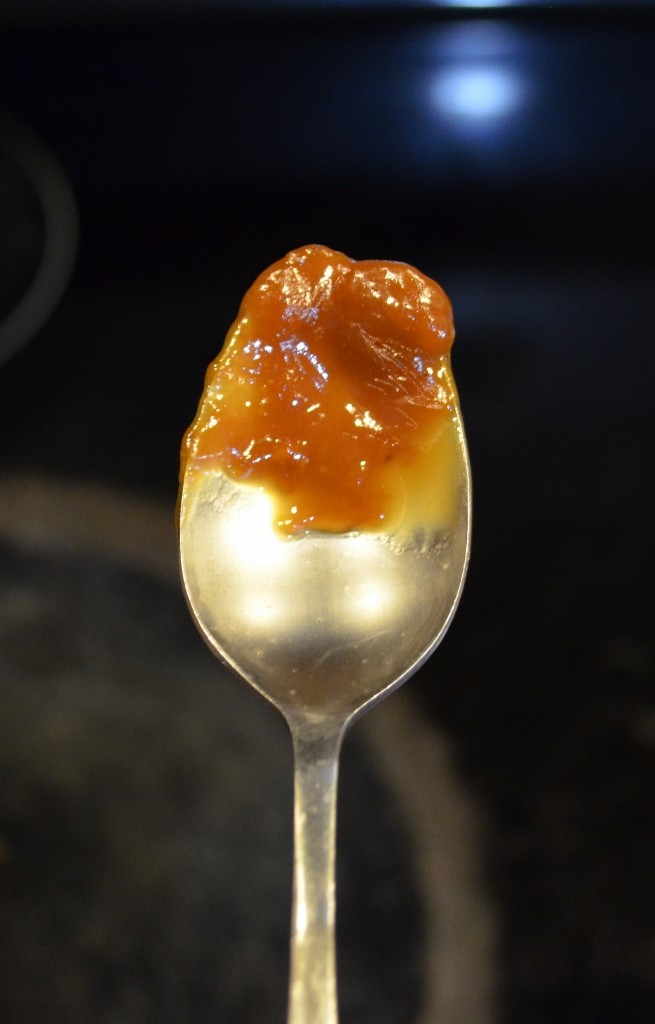Your roommate’s got the sniffles. Out of the kindness of your heart, you decide to make chicken soup. You start by pouring with boxed chicken stock, and almost instantly, disappointment sinks deep into your soul. You dreamt of a stock bold in both flavor and color, but all you’ve got is a bland, off-yellow puddle of meh. Don’t you even think about pouring it down the drain because we’ve got a much better option: reduce that s**t down.
Okay, maybe I am moving too fast, so let’s start with a definition. Reducing, in the culinary sense of the word, means to concentrate the flavor of a liquid by means of simmering or boiling. I definitely like the idea of concentrated flavor, but how does this process work?
Let’s find out.
Now I’m all about homemade chicken stock, but for consistency, we will be using two cups of boxed stock in this example. Fresh out of the box, it tastes pretty mild and looks rather uninviting. Just to save time, I will be reducing the stock via boiling rather than simmering, but both methods should yield similar results.

GIF by Michael Chlumecky
After a few minutes of boiling, I pour the stock back into the measuring cup and observe what has changed.

Photo by Michael Chlumecky
Now would you look at that? We have some interesting things happening here, don’t we? The first thing you’ll probably is the change in volume. As you may have guessed, this was caused by liquid evaporating out of the saucepan and into the kitchen. That’s cool and all, but we are really interested in what is left behind.
Based off some slim research, most flavor compounds are larger molecules with boiling points much higher than water’s. This means that water should evaporate first, and that is exactly what happens. As the water continues to vaporize, these flavorlicious chicken compounds become more concentrated, intensifying both flavor and color.

Photo by Michael Chlumecky
The picture says it all. The more you reduce your stock, the more intense the flavor becomes. Be careful though, as the salt doesn’t leave with the water. If you reduce too much, you may end up with an overwhelmingly salty stock.
Just for shits and giggles, I decided to see what would happen if I took it a step further and reduced the stock as far as it would go.
Check out what we got.

Photo by Michael Chlumecky
It’s not a pretty sight, but it certainly tells us a few things. Nearly all the water has been evaporated, leaving us with something that tastes like a thousand roasted chickens jammed into one spoonful.
More importantly, notice how damn thick this stuff is. You may not realize it, but this is a big deal. Reducing can be used as a thickening method, effectively adding body to sauces, soups, and stews. Forget about chicken stock, you can use this technique with almost anything that has a high moisture content. Is that tomato sauce a little runny and lacking flavor? Crank up the heat a bit and let ‘er bubble away. Trying to step up your caprese salad? Whip up an elegant balsamic reduction to drizzle over the whole thing.

Photo courtesy of recipeshubs.com
Remember though, certain fluids are more sensitive to heat, notably those with sugar or dairy. You can definitely still reduce them, but it must be done at a simmer to avoid burning. All things aside, this is one helluva technique to have in your repertoire.
As with anything in life, there is a trade off… and a rather obvious one at that. You’re not gonna feed the whole the dinner table with a stew that you reduced the living s**t out of. There are other ways to thicken, but we’ll save that discussion for a different day.
Moral of the story? Use this technique in moderation, but don’t underestimate its power when utilized properly.

Photo courtesy of tumblr.com
Now get to cooking that chicken soup, your roommate’s depending on you.


